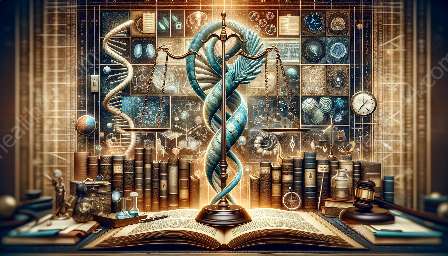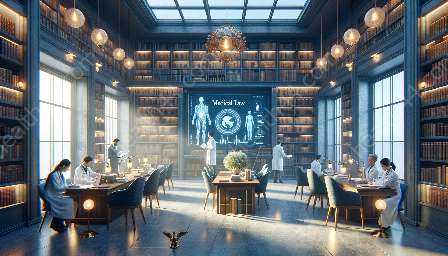Nanotechnology has sparked a revolution in medical device innovation, but its integration comes with regulatory challenges that impact medical device regulations and medical law.
Regulatory Framework for Medical Devices
Before delving into the regulatory challenges, it's crucial to understand the existing regulatory framework for medical devices. In the United States, the Food and Drug Administration (FDA) oversees the regulation of medical devices through the Federal Food, Drug, and Cosmetic Act. Medical devices are classified into three categories based on the level of risk they pose: Class I, II, and III.
Nanotechnology in Medical Devices
Nanotechnology involves the manipulation of matter at the nanoscale, providing unique properties that have paved the way for groundbreaking advancements in medical devices. Nanomaterials, such as nanoparticles and nanotubes, exhibit exceptional mechanical, electrical, and biological properties that make them ideal for enhancing the performance of medical devices, such as diagnostics, drug delivery systems, and imaging tools.
Regulatory Challenges
Despite the immense potential of nanotechnology in medical devices, its regulatory integration presents several challenges:
- Risk Assessment: Nanomaterials may exhibit unpredictable behavior due to their small size, posing challenges in risk assessment and safety evaluation.
- Definition and Classification: The current regulatory framework may struggle to accurately define and classify nanotechnology-based medical devices, leading to ambiguity in their regulatory pathway.
- Biocompatibility and Toxicity: The unique properties of nanomaterials raise concerns about their biocompatibility and potential toxicity, necessitating specialized testing and assessment protocols.
- Standardization: The lack of standardized testing methods and characterization techniques for nanomaterials complicates regulatory assessment and comparability between different products.
- Labeling and Traceability: Nanotechnology-related aspects, such as specific nanomaterial compositions and interactions, need to be accurately labeled and traceable throughout the product lifecycle.
Impact on Medical Device Regulations
The emergence of nanotechnology in medical devices challenges traditional regulatory paradigms, leading regulatory bodies to address the following:
- Guidance Development: Regulatory agencies are prompted to develop specialized guidance documents for the evaluation and approval of nanotechnology-based medical devices, outlining specific testing protocols and risk assessment criteria.
- Revised Classification: Periodic evaluation is required to assess whether the current classification system adequately captures the unique risk profile of nanotechnology-based medical devices, potentially necessitating a revision in classification criteria.
- Adaptive Review Processes: Flexible review processes may be introduced to accommodate the dynamic nature of nanotechnology, enabling timely evaluation and approval of innovative medical devices.
- Post-Market Surveillance: Robust post-market surveillance mechanisms become essential for monitoring the long-term safety and efficacy of nanotechnology-integrated devices, requiring collaboration between regulatory authorities and healthcare professionals.
Intersection with Medical Law
From a legal perspective, the integration of nanotechnology in medical devices raises pertinent issues related to liability, intellectual property, and patient safety:
- Product Liability: The unique properties and performance of nanotechnology-based medical devices may complicate product liability claims, necessitating a comprehensive legal framework to address potential harms and damages.
- Intellectual Property Protection: The intellectual property landscape is challenged by the novel applications of nanotechnology in medical devices, requiring robust patent protection and licensing agreements to foster innovation and investment.
- Informed Consent: Patients need to be adequately informed about the use of nanotechnology in medical devices, ensuring informed consent and transparency regarding potential benefits and risks.
- Privacy and Data Security: The advanced functionalities of nanotechnology-integrated devices raise concerns about data security and patient privacy, necessitating adherence to strict legal standards and regulations.
Conclusion
The regulatory challenges associated with the integration of nanotechnology in medical devices signify a critical juncture in the evolution of medical device regulations and medical law. While navigating these challenges, it is imperative for regulatory agencies, legislators, and legal experts to collaborate in developing adaptive regulatory frameworks and legal mechanisms that safeguard patient safety without stifling innovation in the realm of nanotechnology-enabled medical devices.



